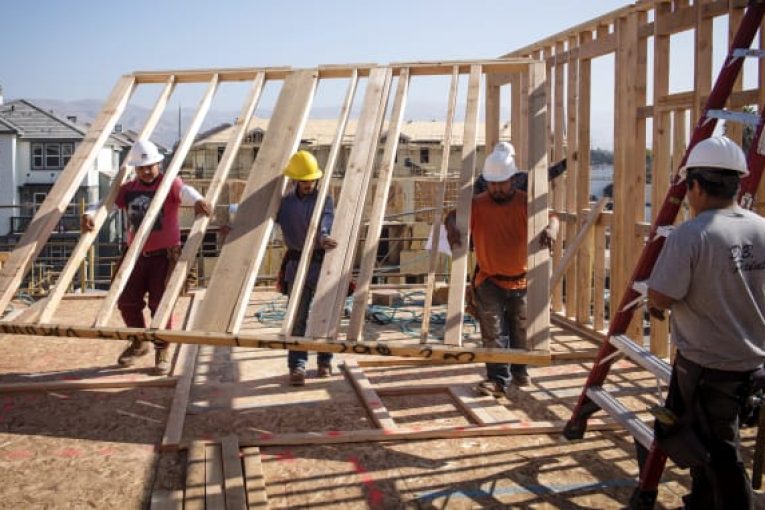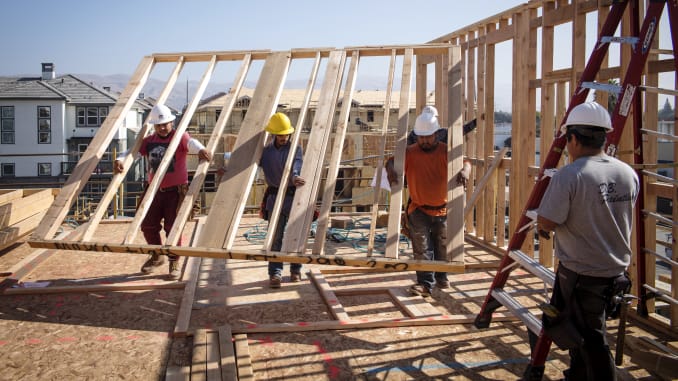

Greg Chew and Dov Kadin from SACOG (Sacramento Area Council of Governments) gave a presentation to council about the Regional Housing Needs Allocation (RHNA) process that will be coming up for the new cycle in 2021. “RHNA seeks to ensure we are zoning to accommodate enough housing for all economic segments of the community.”
It is important to note that RHNA does not require that the city build housing, it requires that the city zone enough land for the anticipated growth that we have over an eight-year period of time.
Dov Kadin discussed how this relates to the city of Davis.
Davis has about 1.4 percent of the regional growth. When they calculate that, they come up with the 2075 units that Davis will need to plan for as part of this process. That number then gets translated into the four income categories.
They start at 40.7 percent, which calculates 845 lower income units. Then you add in three adjustment factors – the regional income parity adjustment factor (-15), the AFFH (Affirmatively Furthering Fair Housing) Adjustment Factor (+100), and the Jobs/Housing Fit adjustment factor (0) and that brings the total to 930 lower-income units or 930.
AFFH is the fair housing adjustment, where Mr. Kadin described the need to open up opportunity to all economic aspects of the city. The city of Davis is a high-opportunity city, where one hundred percent of the units in the city fall into what is considered a high-opportunity tract.
“That is because the city of Davis is a pleasant place to live,” Mr. Kadin said. “It has good schools, it has low pollution burden, great access to amenities… all those things are in Davis.”
Because of that, he said, Davis gets 100 extra lower-income units.
What changed from the last cycle? The big change is that the total units has jumped from 1066 to 2075. In addition, the lower-income proportion has also increased.
The regional RHNA number has increased as well, from 104 thousand in the previous cycle to 153 thousand this cycle, and that’s around a 50 percent increase.
“That’s happening because the statute has changed in the last couple of years,” he said. “Our existing shortfall in housing is being considered along with our projected growth right now.”
He explained, “Part of why we are in a housing crisis is because of a collective failure to keep up with demand over the last few decades.”
In addition, Davis has a slightly higher share of regional growth than it did previously. In the last cycle, Davis was 1.1 percent of the regional growth and now it’s 1.4 percent.
Mr. Kadin explained that they don’t project it strictly by population, and that works to Davis’ advantage. If they were doing it strictly by population share, Davis would have about 4000 units rather than 2075.
“The long term growth is going up for a variety of reasons,” he said. “The long term projects, that we correctly predicted were not going to happen by 2020, are now moving forward.”
He said, “Growth by the Nishi project is going to get started by 2035. That’s being considered as part of your MTP number.”
UC Davis has an indirect impact here as well, he said. “UC Davis is a growing job center. The proximity to these jobs as well as the jobs-housing balance, is something that we consider as part of the MTP.”
Doug Kadin also explained that they have to hit their Greenhouse Gas Emission goals as well, and in the housing considerations, they do that by attempting to locate housing near jobs. “Housing near places that really allow you to not have to drive as far.”
He said, “Because of the big jobs base that UC Davis has… when you live in Davis you don’t need to drive as far. That is what our models are showing.
“There are GHG reasons why it makes sense to locate housing in Davis,” he said. “Davis is thus getting a bigger sense of a larger pie.”
In addition, Davis’ proportion of lower-income units is increasing over the last cycle, from 39.6 percent to 44.8 percent.
This was largely due to the introduction of the Affirmatively Furthering Fair Housing Adjustment Factor. “That was something that was not required last cycle,” he said. But that’s included in the factor by statute this time.
He also explained, “RHNA is not the right mechanism for addressing UC Davis Housing Needs.”
In part, “The State removes student housing from our Regional RHNA.
“UC Davis is not going to get a RHNA allocation,” he explained. “We only give RHNA allocations to local governments. UC Davis falls within unincorporated Yolo County. It would be Yolo County that’s getting the RHNA allocation for UC Davis.”
However, “Yolo County does not have land use authority over UC property.” Thus they would have no discretion to change the zoning on UC Davis. That could require them to upzone the agricultural land nowhere near where the need is.
“This isn’t in our interest,” he said, if that were the outcome. They address it by removing the UC Davis MTP from the RHNA calculation. This doesn’t impact the city of Davis at all, only Yolo County.
He did add that the MOU entered into by UC Davis, Davis and Yolo “is actually a much more effective way to actually get at this problem then RHNA ever could be.” He said that “it’s a binding agreement” and “UC Davis is formal participant.”
He said, “From SACOG’s perspective, this is really great to see,” especially since “it’s being done at the local level.”
One issue of note – right now RHNA has Davis’ lower-income share at 45 percent, whereas state law and local ordinance has the low-income share at 15 percent. One of the consultants told the Vanguard that may mean that the city of Davis has to look at affordable-only projects to meet their affordable housing needs. The other options would be for the city to exceed the market rate housing goals in order to meet the higher affordable housing needs.
That was not discussed at the council meeting, however.
Melissa Coy discussed the state’s role in this process. Key things they are looking for – do sites have appropriate zoning? Are sites suitable and available for development within the planning period? How much development capacity is realistic?
In addition: are there potential alternatives to meet RHNA? Accessory dwelling units. Manufactured housing. Conversion, preservation and substantial rehabilitation.
A key question is whether there is enough development opportunity to meet the RHNA by income. And if no, then there is as need to zone more land, she said.
—David M. Greenwald reporting







“One issue of note, right now RHNA has Davis’ lower income share at 45% whereas state law and local ordinance has the low income share at 15%. One of the consultants told the Vanguard, that may mean that the city of Davis has to look at affordable-only projects to meet their affordable housing needs. The other options would be for the city to exceed the market rate housing goals in order to meet the higher affordable housing needs.”
That’s not how the process works. HCD considers that higher-density zoned land meets the requirement to have land available. This density threshold varies by community.
Point taken, next time I won’t attempt to head off an obvious question and confuse the issue.
You also said in earlier articles that jurisdictions have to “build” the housing. This is incorrect.
“Mr. Kadin explained that they don’t project it strictly by population, and that works to Davis’ advantage. If they were doing it strictly by population share, Davis would have about 4000 units rather than 2075.”
Building less is to Davis’ advantage?
Of course it is. To people who own Davis. Landowners. Those more likely to vote.
For them, higher land values. Higher rents.
“To Davis’ Advantage!”
If you own a piece, you are part of “Davis”.
I didn’t see “MTP” defined in the article, before it was used in a sentence. Would the author please define this?
Also, what exactly is the implication of these statements? For example, is Nishi being “counted” as part of the RHNA requirements, or is it actually creating a larger number of required units?
Just saw this, as well. So, is Nishi both creating additional requirements, while simultaneously not counting toward those requirements?